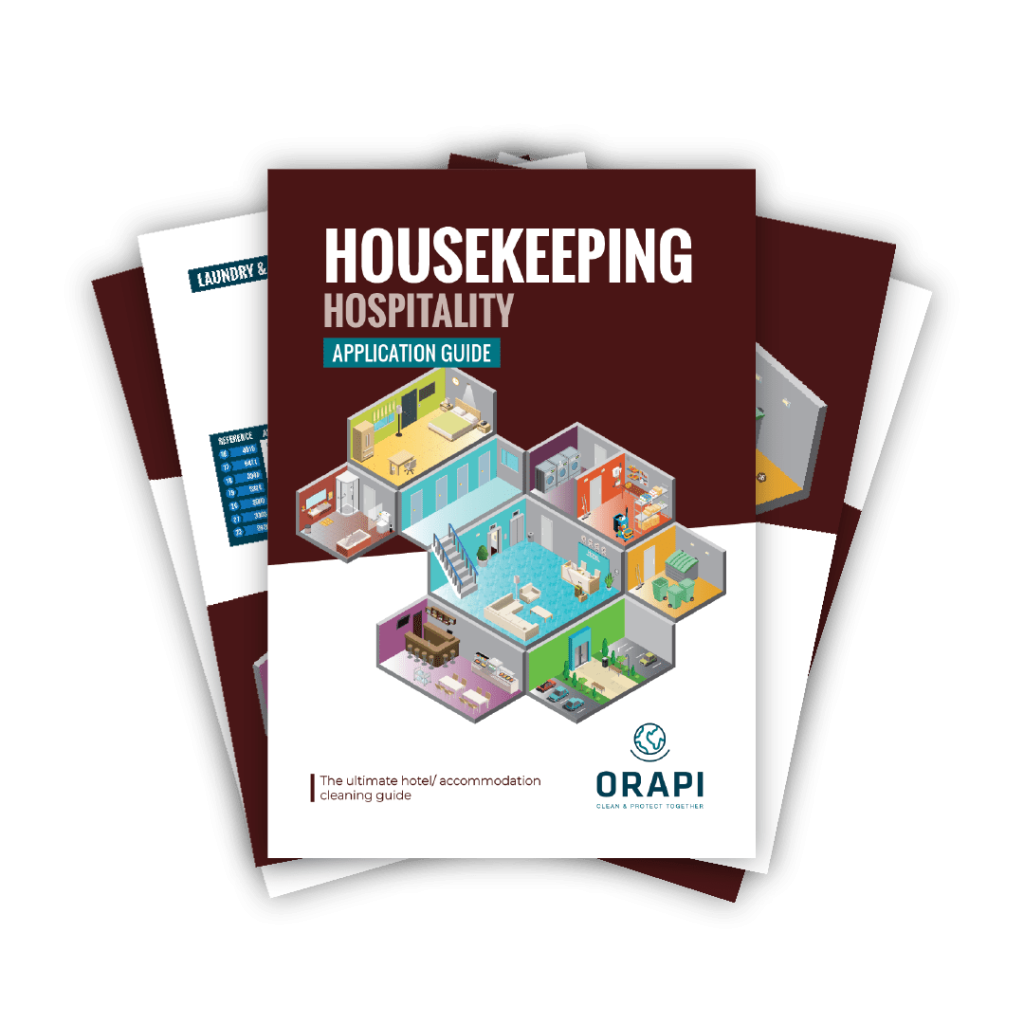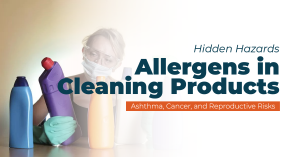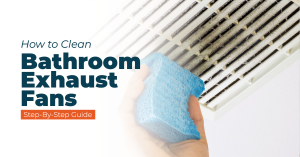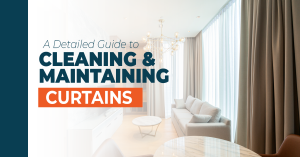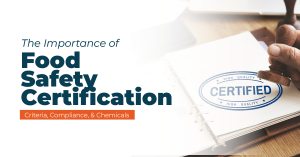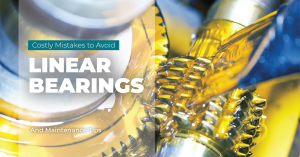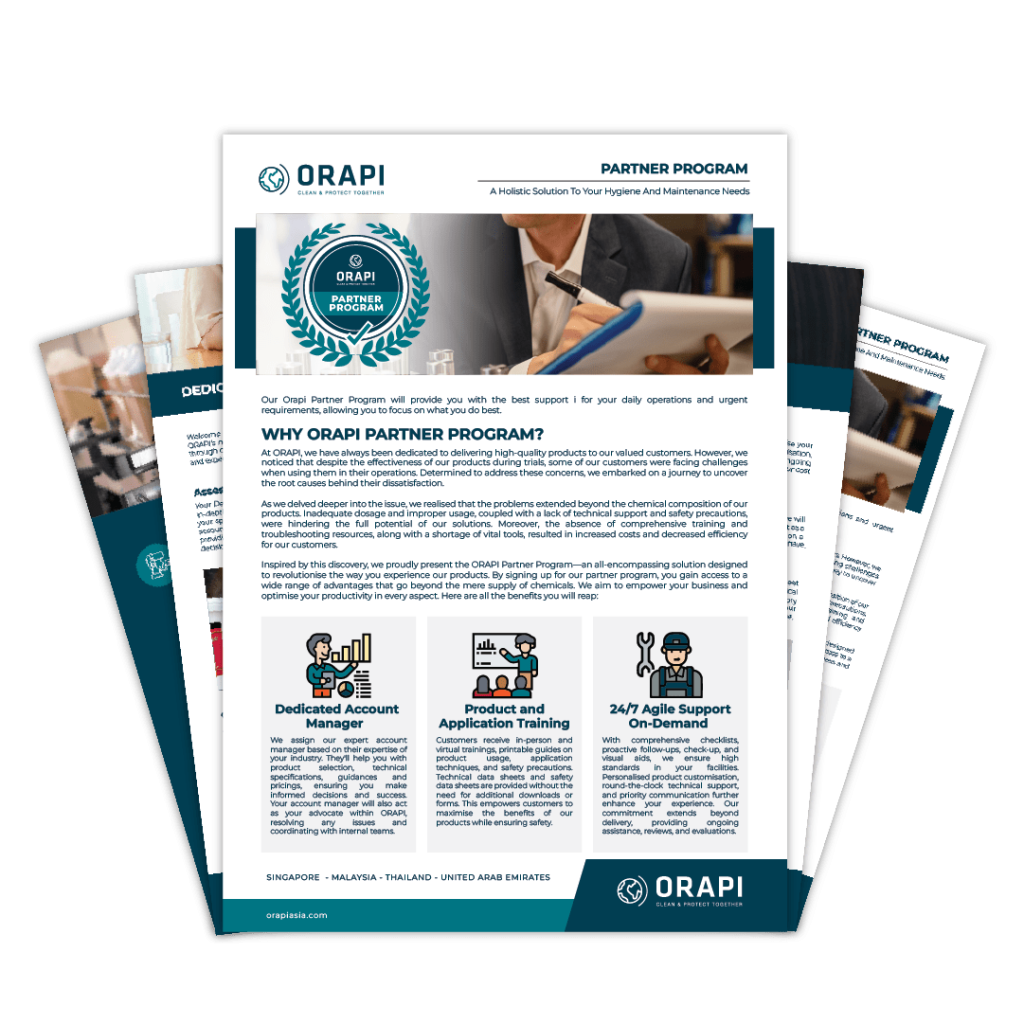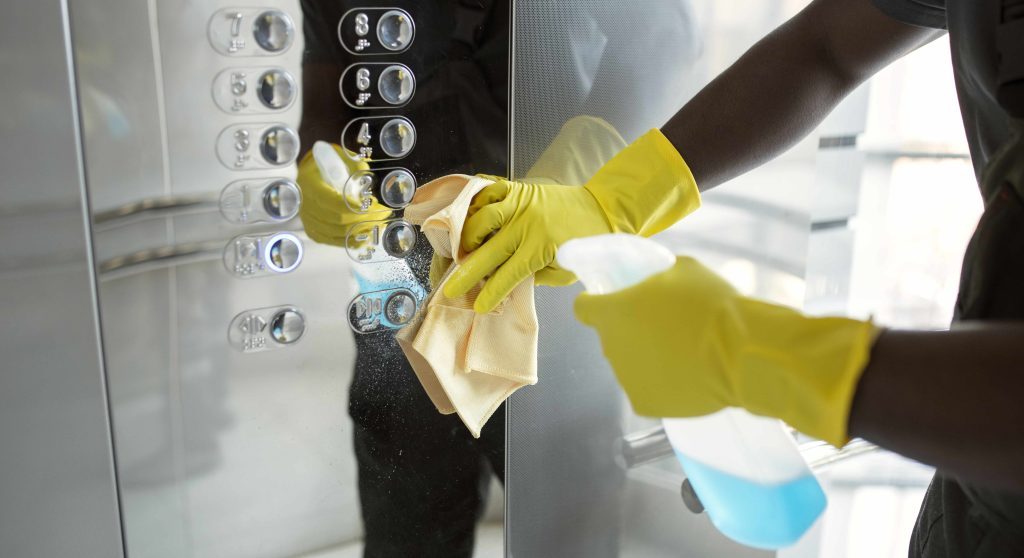
The 7-step cleaning procedure is a simplified system extracted from detailed health care policies governments developed to protect hospital patients and staff. Most cleaning professionals have admired the method as the best approach. However, not all spaces have similar cleaning demands. Some places have more intensive cleaning policies owing to the nature of removing dirt and bacteria. For example, the cleanliness standard for hospitals is very different from that required in warehouses, and structural differences may also provide unique challenges there. This article surveys the application of the 7-step process in various kinds of spaces.
Cleaning, Sanitizing, and Disinfecting: These three terms, although appearing to be synonymous, have different meanings:
Cleaning: The process of taking away dirt or wiping a surface to present it as a clean surface.
Sanitizing: The use of strong chemicals to kill or reduce some types of bacteria but not all kinds of microbes.
Disinfecting: The process of using disinfectants that kill a wide range of microorganisms, such as bacteria, viruses, and fungi.
Commercial cleaners typically combine natural cleaners with disinfectants to achieve effective cleaning.
Cleaning Procedure: The Need for Them

Effective cleaning is a matter of health protection since many microorganisms and surface pollutants can impose severe threats to the well-being of individuals. In Singapore, for example, bizSAFE certification is given to firms pledged to workplace safety and health through conformance of standards issued by the Workplace Safety and Health Council.
Proper cleaning, especially of high-touch surfaces like door handles, railings, shared appliances, tools, and light switches, plays a huge role in keeping the area safe. Some examples of health risks that thorough cleaning can mitigate include:
Flu and cold viruses are able to spread easily in any workplace, thus affecting general health.
Food-Borne Viruses
The pathogens E. coli, salmonella, and campylobacter are common in the hospitality industry; their conditions can be very serious and often deadly.
Infections from Body Fluids
In health care and in places like tattoo parlors, infections like HIV can be transmitted through exposure to body fluids or skin punctures.
Food Allergens
The smallest amount of allergen present in restaurants can cause severe reactions among people with food allergies.
Non-Food Allergens
Dust and other allergens found in many workplaces may cause allergic reactions in sensitive workers.
The 7 Simple Steps to Commercial Cleaning
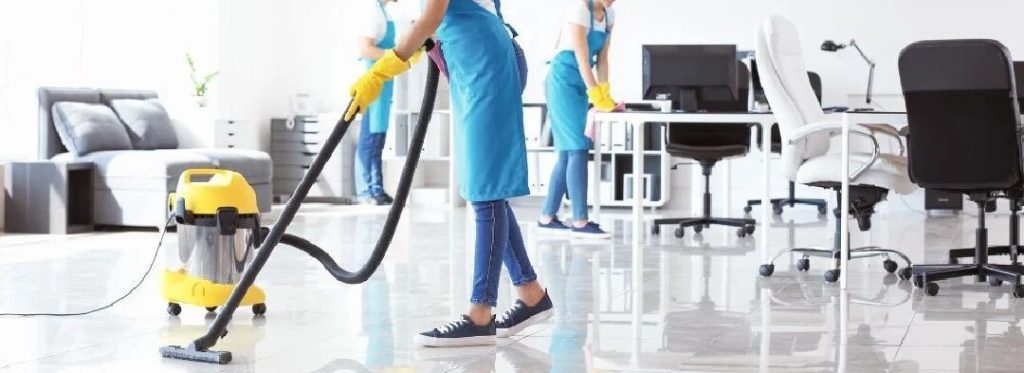
Commercial cleaning follows a seven-step cleaning procedure, focusing on specific items in a systematic order for cleanliness to be effective. All these steps are very important in creating a clean and safe environment, so they must be followed in order.
1. Take away Rubbish
Begin by dumping garbage bags and liners into their respective bins, then wipe down the inside of the bin. If it’s clean, put a new liner in it to complete this step.
2. Dust High Surfaces First
Dust all surfaces above shoulder height, either clockwise or counterclockwise around the room. This will help prevent dust from settling on cleaned lower areas and will make the damp mopping easier later on.
3. Damp Wipe High-Touch Surfaces
Clean all high-touch surfaces, excluding glass, with a neutral disinfectant and a damp cloth. Focus on key areas, such as light switches, phones, doorknobs, and desks that have focused bacteria. It helps in the prevention of germ spread.
4. Restock Basic Supplies
Dust and other allergens found in many workplaces may cause allergic reactions in sensitive workers.
5. Dust Mop Floor Level
Having cleaned the high surfaces, proceed to the floor: with a dust mop, pick up dirt and debris, working around large pieces of furniture for a thorough sweep that leaves no area unattended.
6. Check for Areas Missed and Damages
Before completing the task, walk through to ensure no area was missed or damaged. Although cleaning staff are not responsible for damages, it is important to report any damage. Doing this before wet mopping will prevent extra cleaning.
7. Damp Mop Floor Surfaces
Lastly, wet mop the floor. Fill the cleaning bucket with diluted cleaner, and starting at the edges of the room, work in a star-shaped pattern toward the center so as not to walk on the just-wetted floor. Finally, allow the floor to air dry.
Final Thought: Post a Wet Floor Sign Always follow up with a “Wet Floor” sign to prevent accidents and potential legal liabilities.
Differences in Cleaning Applications
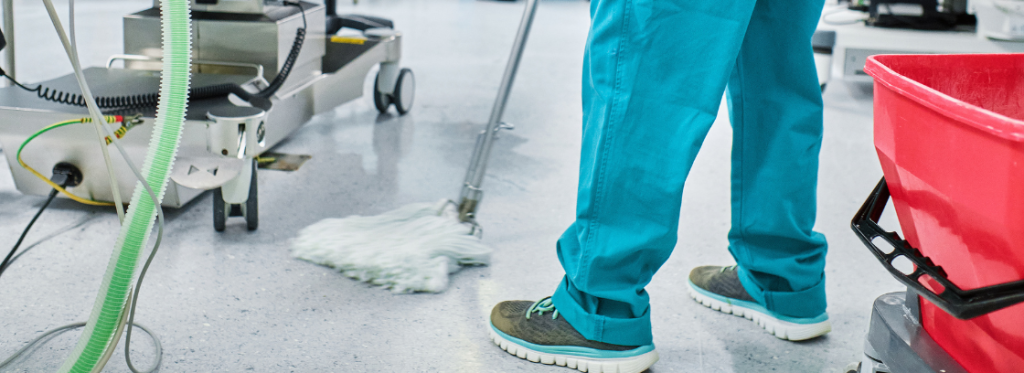
The 7-step cleaning procedure provides the basic framework. However, each cleaning procedure may vary slightly depending on specific needs, and it might take some special tweaking to fit like a glove.
Cleaning the Bathroom: Step-by-Step Instructions
The general 7-step process applies to cleaning bathrooms, with steps including trash removal, restocking supplies, and mirror wiping. However, a few important adaptations are as follows:
Allow Cleaning Agents to Soak
Toilet and urinal cleaners perform best when allowed to soak. The longer the contact time, the more time cleaning agents have to kill microbes.
Dedicated Cleaning Materials
Have distinct, single-use cloths or disposable paper towels for every urinal and toilet. There is a toilet brush that should only be used for the interior of the toilet; cloths or paper towels should be used on exterior surfaces. Professional-grade disinfectants can only be used on bathroom surfaces to ensure that sanitation gets done.
Hospital Hygiene Standards
Cleaning in healthcare settings requires a strict cleaning procedure with well-defined protocols. Each country has established guidelines for healthcare facility cleaning to ensure patient and staff safety and to manage infectious materials.
Use of Medical-Grade Disinfectants
In hospitals, disinfectants must be potent enough to destroy tenacious microbes without posing a threat to human health; pH testing may be required for both potency and safety.
ORAPI RECOMMENDS:
VIRETRON is a potent disinfectant with bactericidal, yeasticidal, and virucidal properties, formulated to reduce the spread of airborne viruses and bacteria that cause diseases.
It is ideal for areas with high foot traffic or close contact, such as schools, hospitals, clinics, hotels, restaurants, factories, and workplaces with large staff.
VIRETRON is recommended during outbreaks and effectively controls virus and bacteria spread.
Focus on High-Touch Areas
Beds, headboards, IV poles, remotes, rails, and floors should be regularly disinfected to ensure a safe and sanitary environment is maintained.
Commercial and Office Cleaning: Detailed Considerations
Office spaces can be quite different, but they often have unique challenges. Follow the 7-step process, especially when it comes to disinfecting high-touch items like phones, computers, desks, and doorknobs.
Routine vacuuming should be done for the carpeted areas. More soiled or stained areas may require special cleaning tools or treatments to be used to keep them clean.
Improving Cleaning Efficiency and Safety
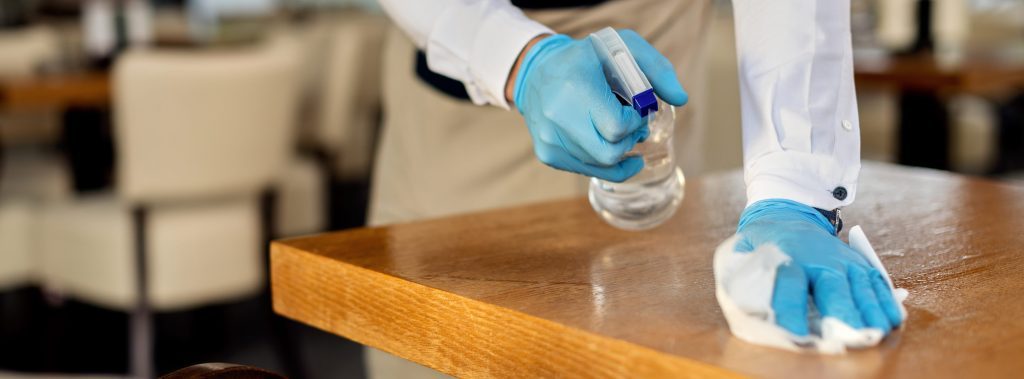
Following the seven steps of a cleaning procedure is a good starting point for effective surface cleaning. However, a few additional steps can ensure an increase in the effectiveness of disinfection and safety for the person performing this kind of work.
Adhere to Cleaning Schedules and Risk Assessments
Stick to cleaning schedules and any risk assessment at workplaces to have a structured, targeted approach. This will allow you to cover specific areas and tasks noted as necessary for safety and hygiene.
Apply Training Knowledge
If you’ve received workplace training—such as COSHH (Control of Substances Hazardous to Health)—utilize these guidelines to handle potentially hazardous substances safely and minimize associated risks.
Choosing the Right Products
Use cleaning products that have proven ability to remove environmental microorganisms of concern (e.g., foodborne pathogens in kitchens). Ensure the product is compatible with the surface being cleaned to prevent damage.
Follow Manufacturer Instructions
Always follow the manufacturer’s instructions for product concentrates and dilution rates. Store products safely according to instructions, to prevent accidental exposure or harmful chemical reactions. Never mix different chemicals together, as this may cause harmful reactions.
Reference NEA Guidelines
Go to the NEA website for cleaning methods, regulations, and practical tips specific to the industry. For instance, to remove pet hair from carpets, run a rubber squeegee across the fabric—this will clump the hair for easy disposal; it is especially effective on tightly woven fabrics where a vacuum has trouble getting the hair out.
Use Appropriate PPE
Wear appropriate PPE (personal protective equipment), such as gloves and aprons. Gloves protect the skin from possible irritants or allergens; the aprons prevent chemicals from passing through the clothes, reducing skin exposure and the chance of cross-contamination. Having proper ventilation can also minimize exposure to airborne chemicals; many of these chemicals can release fumes during cleaning. By reducing such risks, it helps to reduce respiratory risks from prolonged exposure, such as occupational asthma.Lastly, practice good hand washing. Even after wearing gloves, washing hands is an absolute necessity. This removes any lingering traces of the risk of contamination and contributes to general hygiene.
Conclusion
In conclusion, mastering the selection of laundry detergent is essential for efficient and safe clothing care. This guide covers crucial factors such as detergent types, machine compatibility, and stain removal techniques while considering environmental impact, fabric sensitivity, and colour preservation. By understanding these nuances, one can maintain clean, fresh, and vibrant clothing, prioritising both skin health and environmental sustainability.
